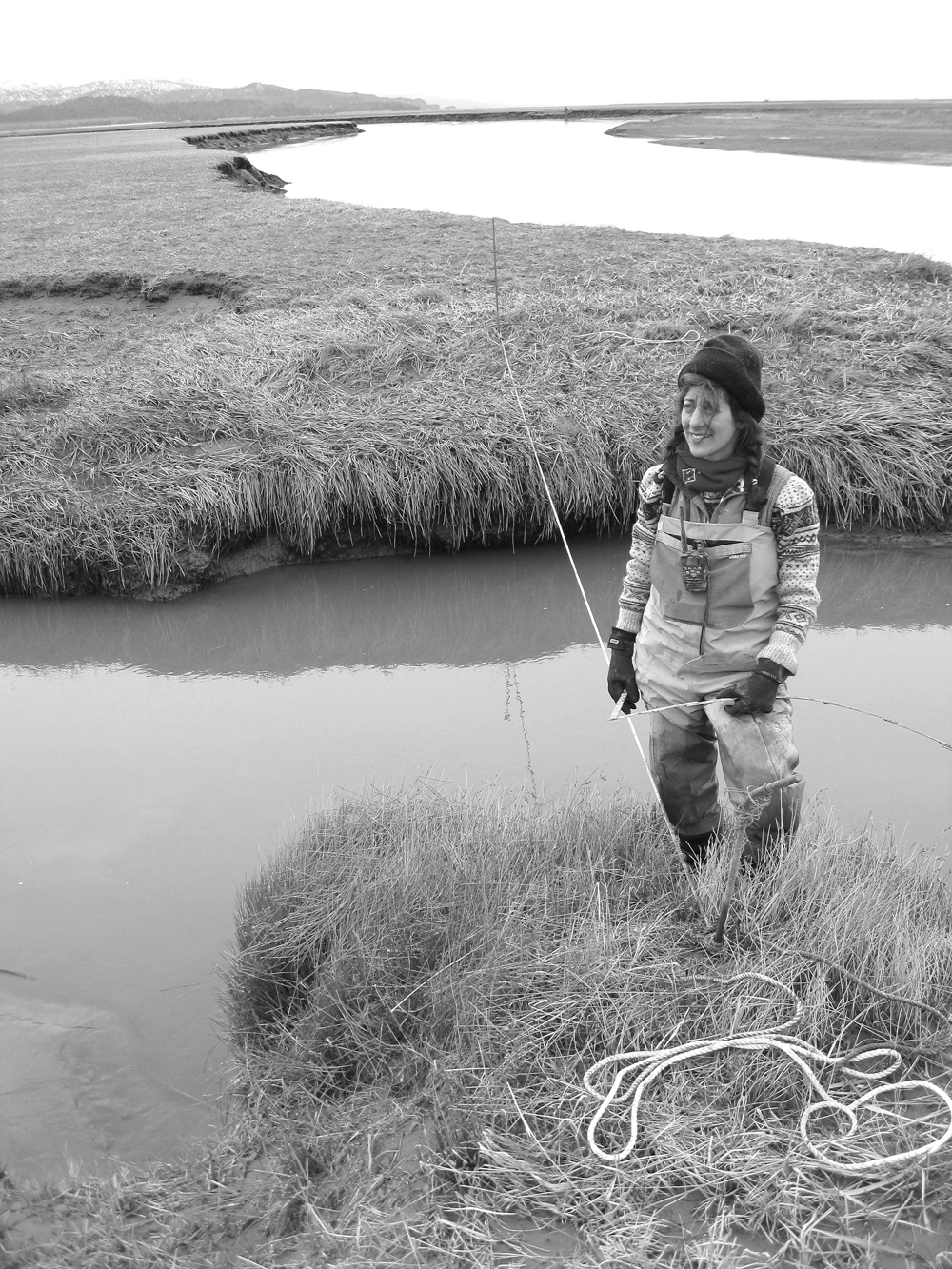It’s no secret people are captivated by salmon. We fish for them, hold music festivals in their honor, pay homage to them in artwork and depend on them for our livelihoods. They’re inspiring.
So much so that Coowe Walker, researcher at the Kachemak Bay Research Reserve, has dedicated a large majority of her time to understanding their habitat.
Walker has been with the Kachemak Bay Research Reserve for the last 15 years and has spent most of that time studying salmon and the landscape they inhabit.
“I’m a wetland ecologist by background, and I really wanted to work for the research reserve. When I started writing grants to fund my position, I quickly realized that salmon were extremely important,” she said in a recent interview.
Although it’s not a surprising realization that salmon are an important part of the lower Kenai Peninsula, Walker was surprised by how little research had been done about their habitat when she started working at the research reserve.
“We really didn’t know anything about this landscape,” she said.
It didn’t take much convincing to get other researchers interested in salmon habitat, and one of Walker’s first research projects in the Homer area was investigating marine-derived nutrients.
“These are the nutrients that return when the salmon come back upstream,” she said. “They leave the stream at the beginning of their life as little fish but when they return to die, they input a large amount of nutrients into the stream that weren’t there before. These nutrients are very important in maintaining the productivity of the stream.”
With this knowledge, a team of researchers, including Walker, set about developing a program to track these nutrients.
“We got a grant to look at the influence of these nutrients all the way up to the headwaters of the stream,” she said.
Nutrients weren’t the only thing that Walker and the other researchers found at these headwaters.
“We found a ton of juvenile salmon rearing themselves in the headwaters,” she said.
Previously, the assumption was that the salmon were only being raised in the main river systems, not the tiny streams that feed into the larger rivers. According to Walker’s research, more than 250,000 salmon are rearing themselves in the headwaters of streams from Homer to Ninilchik in any given year.
It didn’t take long for people to realize these little fish being born in the headwater streams are growing up into the large fish that are so sought after during the salmon fishing season.
“I’m used to talking to agencies, but what I’ve found is that there is a lot of interest from the public and fisherman,” Walker said. “The realization that the landscape, the watershed, are the rearing habitats for the juvenile fish that grow up into large fish gains a lot of interest in our research.”
To protect these headwaters, Walker stresses the importance of the larger landscape.
“Maintaining the habitat
and surrounding landscape of the stream is crucially important to its health,” she said.
As it turns out, this surrounding landscape is a wider area than may first appear. Alder patches occurring hundreds of feet away from the stream and even the groundwater existing beneath the soil play a part in maintaining these headwater habitats.
“The amount of alder you have in the watershed is driving the amount of nitrogen in the stream,” said Walker. Nitrogen is one of the main nutrients keeping the stream healthy.
“Productivity starts at the bottom,” Walker explained. “You have the building blocks like nitrogen that feed the algae, that feed the invertebrates, that feed the salmon that eventually reach the adult stage.”
With roughly 80 percent of the headwater streams rearing salmon occurring on private property, Walker is hoping to use her research to educate landowners on how they can protect these streams.
“We’d like to provide people with information about what areas of their land to protect, and which areas might not be as crucially important,” she said. “Using this research, we’ve developed extremely accurate models that can predict how important a certain area of land is to salmon and how many occur there.”
Walker is continuing to expand her research on salmon habitat and productivity. Anyone who would like to learn more about this research or the Kachemak Bay Research Reserve, or who would like to talk to someone about the headwater streams on their property, is encouraged to visit the Alaska Department of Fish and Game website at www.adfg.alaska.gov and click on the “lands and waters” tab.
Aryn Young is a freelance writer for the Homer News.


